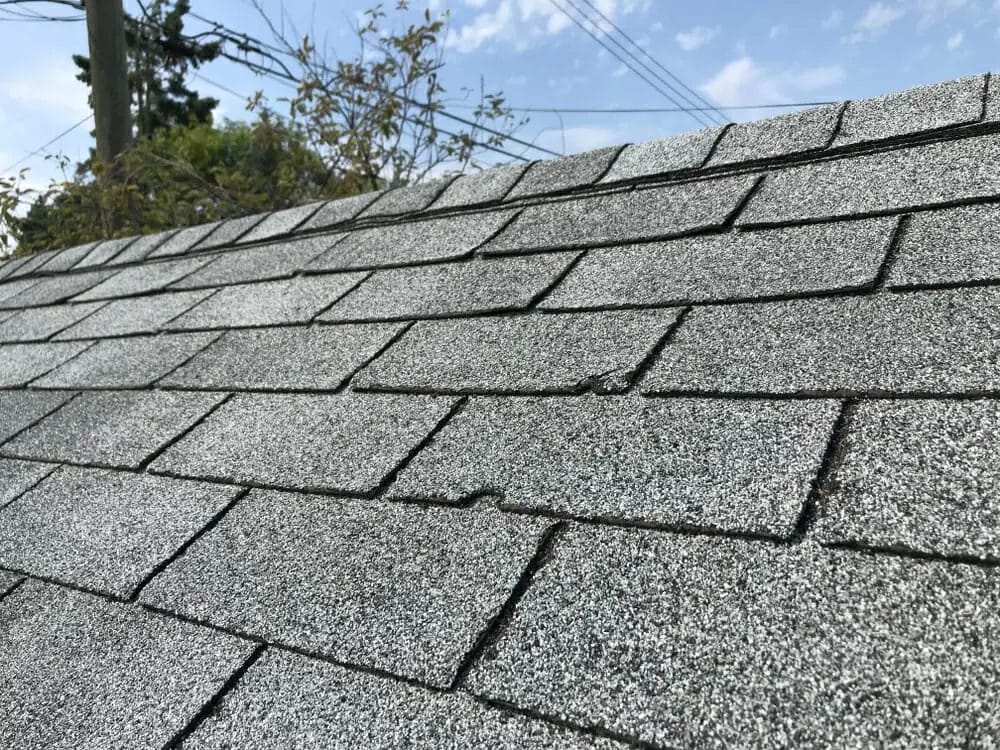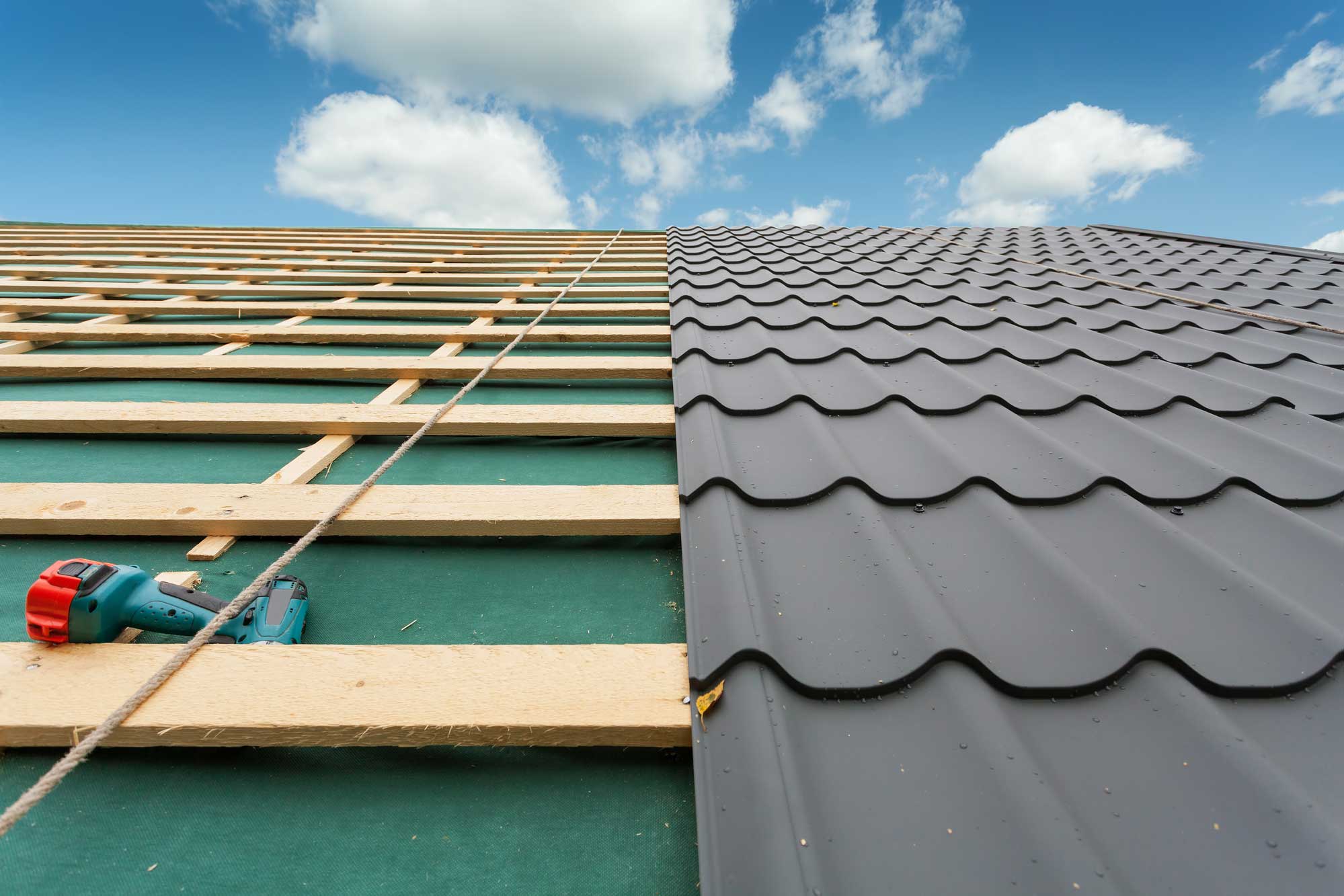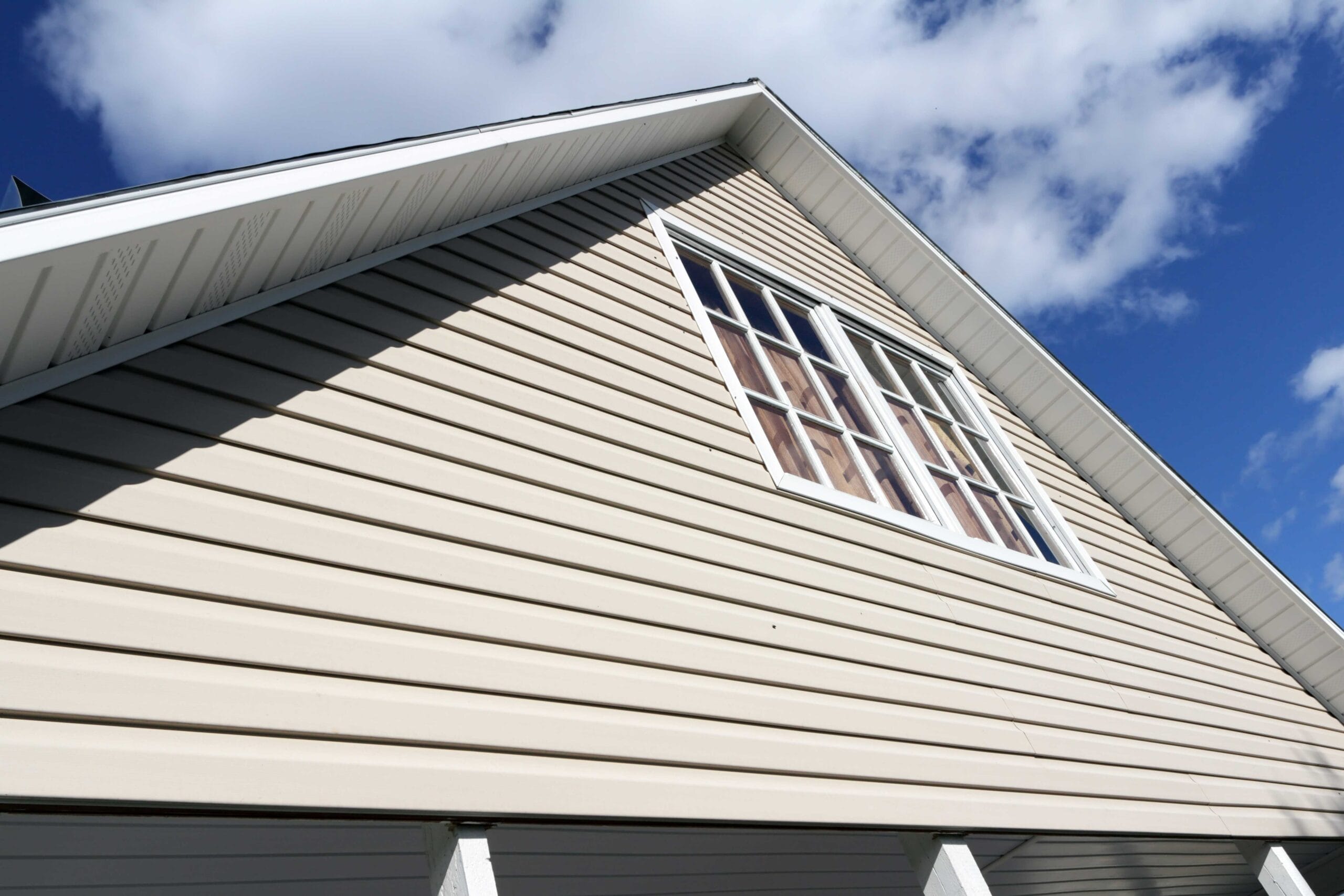With my extensive expertise in the roofing sector, I’m well aware of how stormy weather can wreak havoc on roofs. From high winds and heavy rains to hail and gale-force gusts, even the strongest roofs can suffer damage from Mother Nature’s wrath. In this blog post, we’ll explore how to identify roof damage caused by stormy weather and what steps you should take if your home’s roof has been affected.
Visibly, storm-inflicted roof destruction may be manifested in missing or curled tiles, broken glass, gutter damage, and more. We’ll also investigate some less obvious indications that your roof may have suffered structural damage or water infiltration.
Next is an overview of the insurance claim process for homeowners needing to file a claim for their damaged roof. We’ll cover everything from documenting the extent of the damage to working with roofing contractors and insurance adjusters.
Finally, we’ll wrap things up with tips on finding a professional roofing contractor to help you repair your storm-damaged roof quickly and effectively. Whether you’re dealing with wind damage or hail dents on your asphalt shingles, working with someone who knows how to get the job done right is important.
In short: If you want to learn how to identify storm-related damages on your home’s roof before they become more significant problems; understand what repairs are necessary; navigate through an insurance claim process successfully; find reliable roofing contractors, then keep reading!
Identifying Storm Damage On Your Roof
Storm damage can be hard to identify on your roof, but inspecting it after a storm is essential. Even minor damage can cause severe problems down the road if not addressed quickly. Knowing what signs to look for and when to call in a professional is key to maintaining the integrity of your roof.
When assessing visible storm damage, look at the shingles or tiles from ground level. If you see any missing or broken pieces, that’s an obvious sign of visible damage that needs attention. You may also notice curling edges on some shingles; this indicates they are no longer waterproof and should be replaced as soon as possible before water seeps into the underlying structure of your home. It’s also essential to check around vents and other openings in the roof for gaps where rainwater could get in.
Granule loss is another standard indicator of storm damage – especially hail storms – which can cause granules from asphalt shingles to come off more quickly than usual during heavy rainfall. This makes them less effective at protecting against moisture infiltration over time, so they need replacing sooner rather than later if you spot any granule loss during an inspection post-storm.
Wind-related damages such as torn or missing shingles often occur along ridges and eaves where winds tend to concentrate their force most heavily against homes during severe weather events like hurricanes or tropical storms with strong gusts of wind up above 50 mph (80 km/h). If you have metal flashing installed around these areas, inspect those too since wind can blow these out of place just like regular asphalt shingle material does sometimes too.
Keep an eye out for algae growth on roofs, which can be caused by high humidity levels combined with excessive amounts of standing water left behind after rainshower events. This type of growth often appears as greenish-blackish streaks across surfaces, but the appearance may vary depending on environmental conditions in the area. Therefore, inspecting your roof even when the skies seem clear outside periodically is important. Keywords: Storm Damage, Roof Repair/Replacement, Shingles/Tiles, Granule Loss, Flashing, Algae Growth
Identifying the harm inflicted on your roof by a storm is essential to evaluate its scope. By assessing the extent of storm damage, you can determine what steps must be taken for a successful repair or replacement.
Assessing The Extent Of Storm Damage
Multiple elements must be evaluated to assess a storm’s impact on your roof accurately. Considering the necessity of fixing or replacing a roof after storm damage is paramount.
Examine the roof for any evidence of deterioration, such as missing shingles, holes, cracked flashing, or damaged gutters – all potential signs of storm-related damage. These all indicate that your roof has been compromised by wind-driven rain or hail during a storm. Additionally, it would be best to look for any water stains on ceilings or walls inside your home that may indicate leaking from above due to roof damage caused by storms.
Next, you should check for any loose nails around areas where shingles have been removed due to storm damage. Loose nails can cause further deterioration of your roof over time if left unaddressed. It’s also important to note any granules from asphalt shingles that may have washed away during heavy rains; this could mean that more than just surface-level repairs will be necessary after a storm event.
Considering the wear and tear on existing materials like underlayment and flashing is critical to determining whether repairs or replacements are necessary after a major storm. If these components have seen significant use before experiencing a hailstorm or hurricane, they may need replacing even if only minor damages were visible post-storm; otherwise, future issues could arise, which would lead to pricey fixes down the line.
Finally, when evaluating what kind of work needs to be done following inclement weather conditions, always remember that an experienced professional contractor with knowledge regarding local building codes is best equipped to provide sound advice based on their expertise. Therefore, it is wise to seek the advice of a qualified contractor who can accurately assess the damage and provide sound counsel per local building regulations.
It is important to assess the extent of storm damage to determine which type of repair or replacement may be necessary. Gaining insight into the various types of storm destruction can help you make an informed decision on how to manage your roofing venture.
Understanding The Different Types Of Storm Damage
Storms can cause significant damage to your roof. Realizing the varied effects of storms on roofs and how to address them is necessary for those who wish to keep their roofing in top condition.
Wind Damage:
The wind is one of the most common causes of a storm-damaged roof. High winds can loosen shingles, lift them, or blow them off entirely. If you notice any missing shingles after a windy day, it’s important to have a professional come out and assess the situation as soon as possible. In some cases, all that’s needed is replacing a few shingles; however, more extensive repairs may be necessary if high winds have caused structural damage.
Hail Damage:
Hailstones can also wreak havoc on your roof if they are large enough and hit with enough force. Smaller hailstones won’t do much harm, but larger ones could leave dents in metal surfaces or even break through asphalt shingles, leaving behind small holes that must be patched up before further water infiltration occurs. It’s best to call an experienced roofer who will know what steps should be taken next depending on the extent of hail-related damages sustained by your roof system during a severe weather event like this one.
Flood Damage:
Floodwaters pose another threat to storm damage on roofs—predominantly flat roofs, which don’t provide adequate drainage for heavy rains or standing water from nearby bodies of water such as rivers or lakes that overflow due to storms. When floodwater sits atop your roof for too long without being drained away properly, it can seep into cracks between tiles/shakes, causing leaks inside your home over time—not something you want happening. To prevent this type of disaster from occurring in the first place, make sure gutters are cleaned regularly and downspouts are pointed away from buildings so runoff doesn’t accumulate near foundations either.
Ice damming is another potential threat when it comes to storm damage on roofs. Ice dams form when the snow melts unevenly across rooftops, creating pools at lower points where ice accumulates until eventually blocking off drainage channels completely, resulting in leaks inside walls and ceilings indoors due to backed-up moisture buildup outside. To prevent this type of disaster from occurring in the first place, make sure attic insulation levels remain consistent throughout winter months and use heating cables along edges/gutters, etc., if necessary. Not only does this help keep temperatures steady above but below, too, thus preventing costly repairs down the line – you’ll thank yourself later.
Realizing the various forms of destruction storms can cause is essential to making an informed judgment on when a professional should be consulted. Knowing when and why you should contact a roofing specialist for assistance is key to ensuring your safety and protecting your home from further damage.
Knowing When To Call A Professional
Storm damage can be a significant issue for homeowners, especially in areas that experience extreme weather. Knowing when to call a professional roofing contractor is essential to preventing further damage and ensuring your home’s safety.
If you think your roof has been affected by a storm, the initial step is to gauge the severity of any harm. Look for missing shingles or granules, broken tiles, dents in metal panels, damaged flashing around chimneys or vents, and any other signs of wear and tear. Suppose you cannot safely access your roof due to height restrictions or steepness of pitch. In that case, it may be best to contact a professional immediately, as they will have the tools and expertise required for an accurate assessment.
It’s also important to understand what type of storm damage has occurred so that appropriate repairs can be made accordingly. Wind-related damages such as missing shingles or broken tiles are often caused by high winds during storms, while hail-related injuries include dents in metal panels from hail stones striking them with great force. Flooding can cause significant water infiltration into homes if left unchecked, leading to extensive structural damage if not appropriately addressed by experienced professionals in this field.
When deciding whether or not to call in a professional roofer to identify roof damage or help with storm-related repairs, one should take into account various factors such as the cost-effectiveness of DIY solutions (if applicable), safety concerns due to heights/pitch/slope, etc., the severity of existing issues requiring immediate attention (i.e., visible leaks, etc.), and overall longevity & lifespan expectations after professionally conducted repair work versus amateur attempts at a resolution which could potentially result in subpar results and incur additional costs down the line.
Finally, preparing for future storms should also factor into the decision-making process when deciding between DIY vs. Professional help. Knowing how well one’s property was prepared before going through another round of bad weather conditions may dictate how much more needs doing after everything is said and done once everything settles back down. Thus, investing time and money upfront now might save lots more later down the road depending on local climate conditions, which require specific preparation methods tailored to each area’s unique requirements. Therefore, it is crucial to research the options available before committing anything either way; better safe than sorry.
It is important to understand when a roofing issue requires professional attention, as DIY solutions may not always be the best option. It’s vital to ensure your roof is kept in good condition and inspected routinely to be prepared for potential storms.
Preparing For Future Storms
Taking the necessary steps to prepare your roof for future storms is important. Preventative measures are always better than trying to remedy the situation afterward. To ensure your home is adequately safeguarded from extreme weather conditions, take the necessary precautions to ready your roof for future storms.
Start by inspecting your roof regularly. Check for any signs of wear or damage, such as missing shingles, cracked tiles, or broken flashing. If you notice anything that looks out of place, it’s best to call a professional roofer immediately so they can assess the situation and make repairs if needed.
If possible, install impact-resistant materials like metal panels or asphalt shingles on your roof before storm season hits. These materials are designed to withstand high winds and hail better than traditional wood shake roofs. They also provide additional insulation, which helps keep energy costs down during the hot summer months.
Another way to protect your home is with hurricane straps or clips that attach the rafters securely to the walls below them. This prevents wind from lifting roof sections and causing further damage during extreme weather conditions like hurricanes or tornadoes. It’s also wise to trim any overhanging branches near your house since these could easily be blown onto your property during strong gusts of wind and cause significant harm if left unchecked for too long.
Finally, consider investing in insurance coverage tailored explicitly towards storm protection for homeowners in areas prone to inclement weather patterns such as hurricanes or thunderstorms with heavy rains and flooding risks. Thus, if something unforeseen occurs, you can have fiscal aid when it is time to mend matters at a later stage.
FAQs In Relation To Roofing Storm Damage
How does storm damage affect roof?
Storm damage can have a significant impact on the condition of your roof. Powerful gusts, hailstones, and torrential rain can destroy roof components such as shingles. If not addressed quickly, this can lead to leaks, water intrusion, and further structural damage. Inspecting for storm damage after any severe weather event is important to prevent costly repairs down the road. A qualified roofing contractor should be consulted if you suspect any storm-related issues with your home’s roof system.
What to look for with storm damage on a roof?
When assessing the aftermath of a storm, it is crucial to investigate for any hints of wind or hail damage. Look for missing shingles, broken tiles, dents in metal roofs, and any other visible physical damage. Additionally, check the flashing around vents and chimneys and seals between roof sections for potential leaks that high winds could have caused. Lastly, inspect the gutters and downspouts for debris buildup, indicating blocked drainage pathways from damaged shingles or tiles.
What are the most common causes of roof damage?
Familiar roof harm sources are extreme weather conditions, lack of upkeep, and wrong setup. High winds can cause shingles to be torn off or loosened; hail can create dents in metal roofs and puncture asphalt shingles; snow accumulation can cause the structure of a roof to weaken over time due to excessive weight. Inadequate maintenance includes not inspecting the roof regularly for signs of wear and tear and failing to clean debris, such as leaves from gutters which could lead to water pooling on the roof’s surface. Improper installation may include using faulty materials or techniques when installing a new roof, resulting in weak spots prone to leaks or other damage.
What is common storm damage roofs?
Common storm damage to roofs includes wind damage, hail damage, tree branch or debris impact, and water intrusion. Wind can cause shingles to be torn off or loosened from the roof deck; hail can cause dents in metal surfaces and granular loss on asphalt shingles; tree branches or other debris can puncture the roof surface; and water intrusion may occur due to damaged flashing around vents, chimneys, skylights, etc., which could lead to leaks in the interior of your home. A professional roofer should address all these forms of storm damage as soon as possible for proper repair or replacement.
Conclusion
Storm damage to your roof can be a severe issue, and it’s essential to know how to identify the signs of storm damage on your roof. Assessing the severity of any possible harm is critical to ascertain if expert assistance should be sought. Storms can bring about distinct types of destruction, so being aware of the kind that has affected your house will enable you to take proper action. If ever in doubt about the condition or safety standards related to roof storm damage, calling a qualified contractor should always be considered an option. Taking steps now can prepare you for future storms and ensure that no further issues arise from existing damages due to past weather events.
Rely on our experienced roofing contractors to provide comprehensive storm damage repair services and ensure your property is safe from future weather-related issues. Contact us today for a free consultation and quote.





